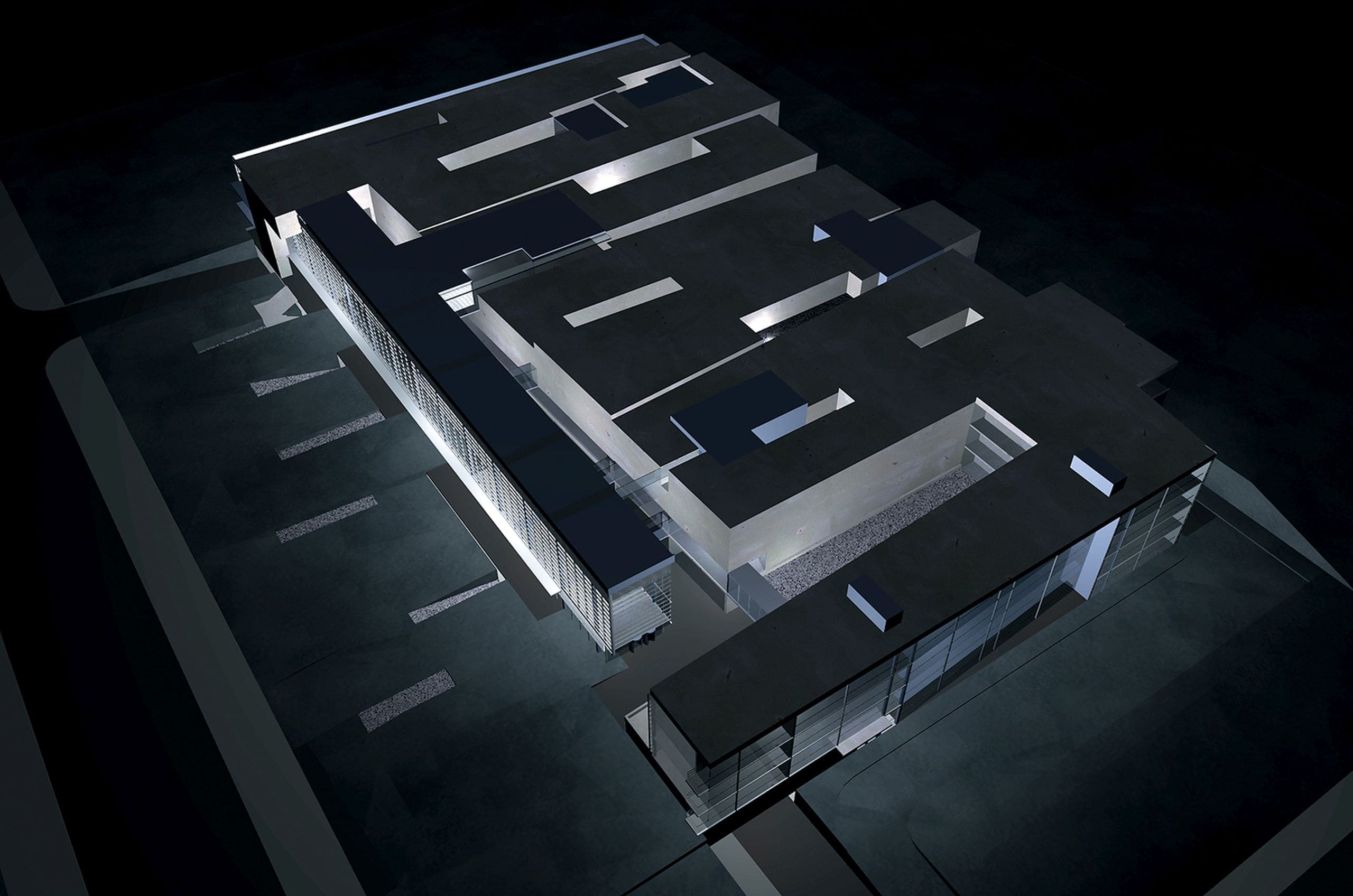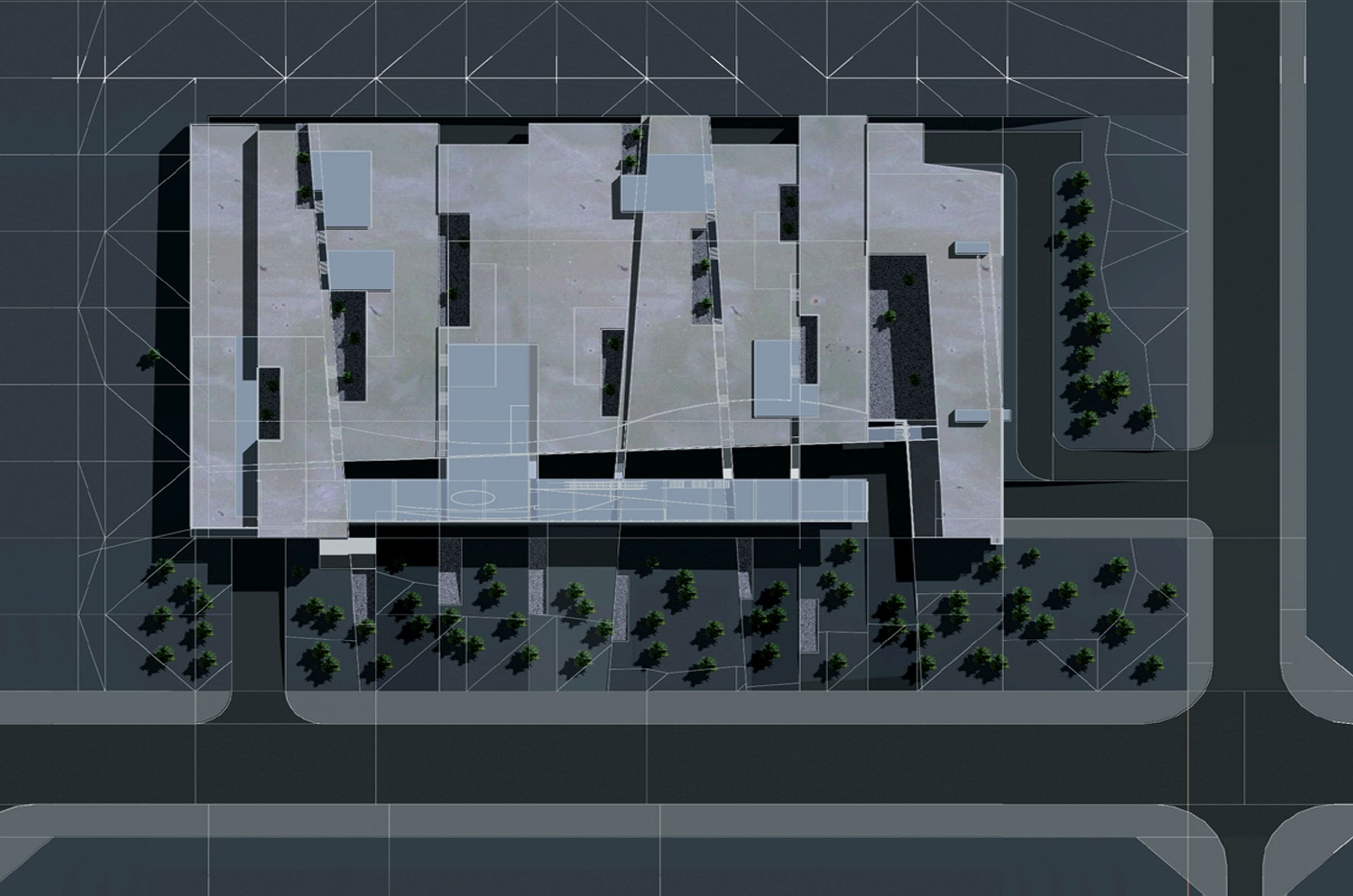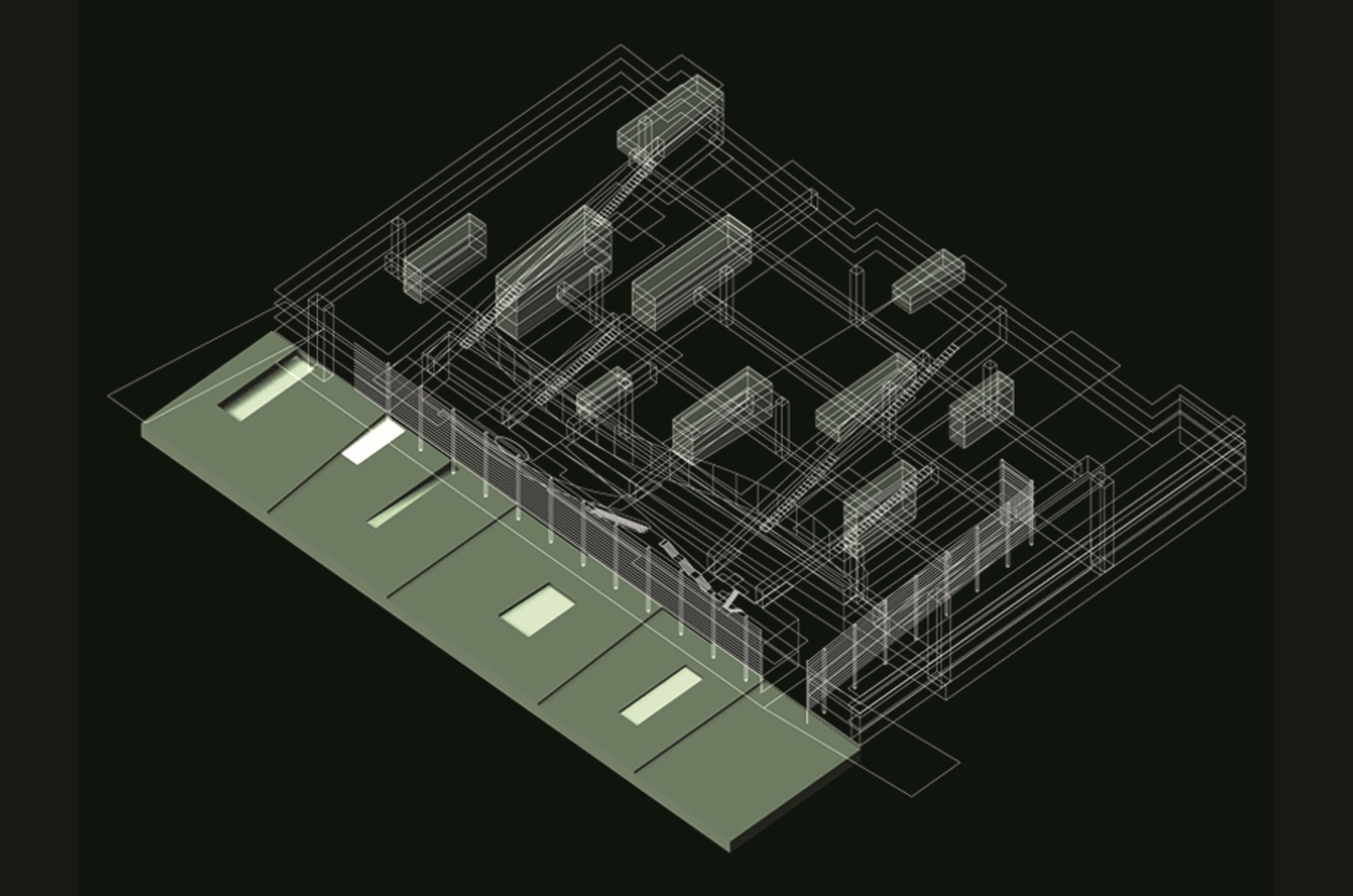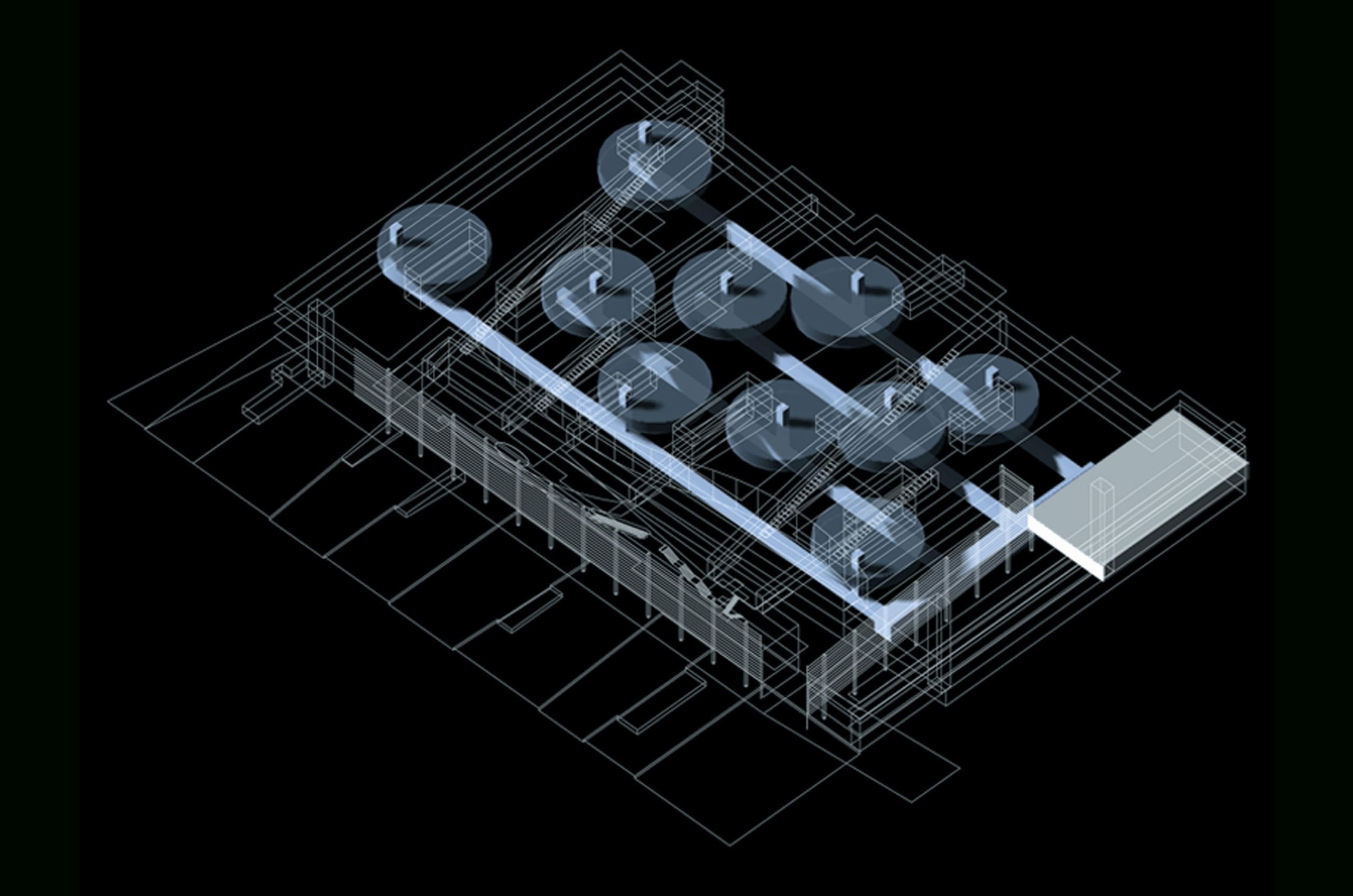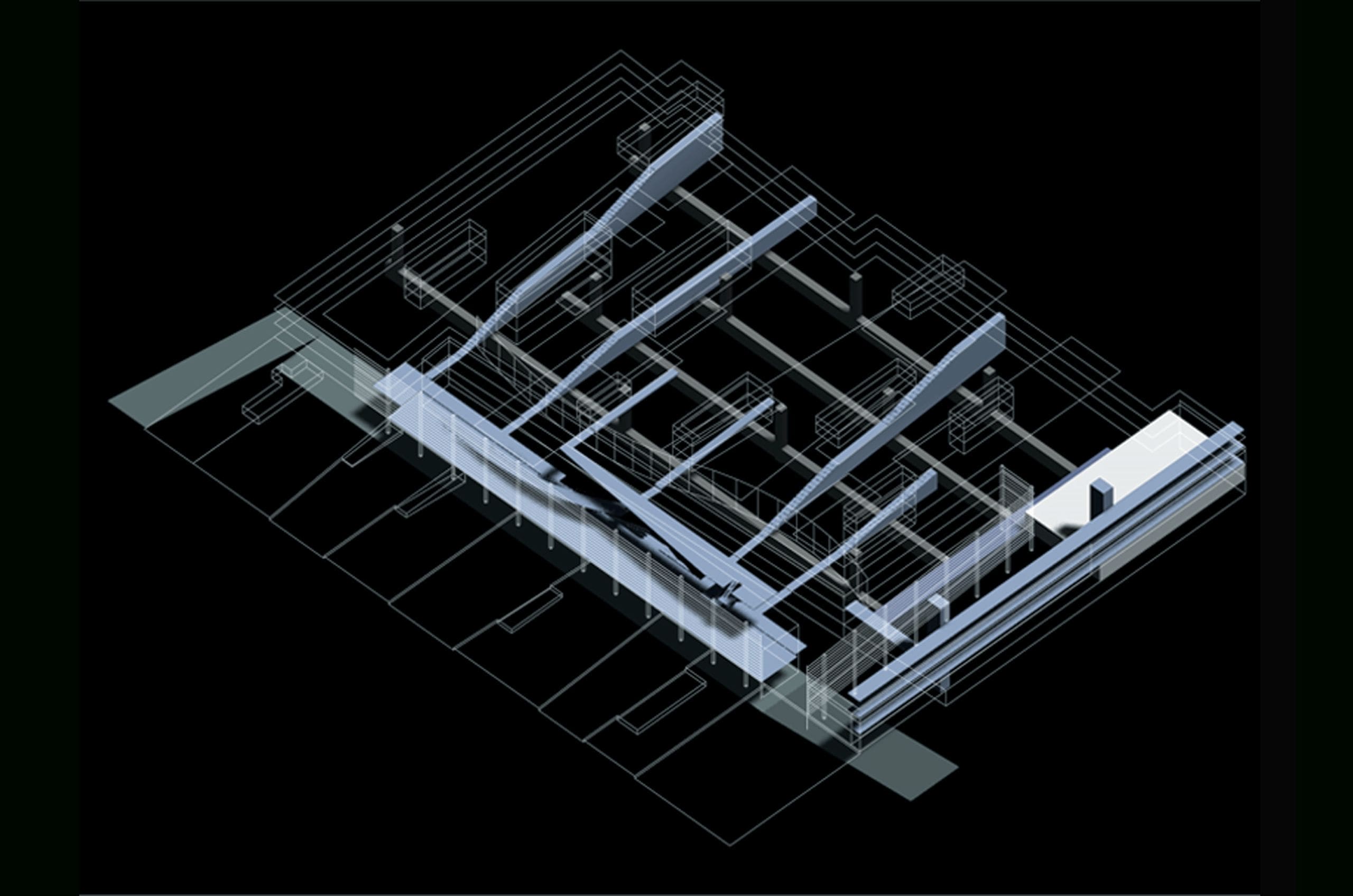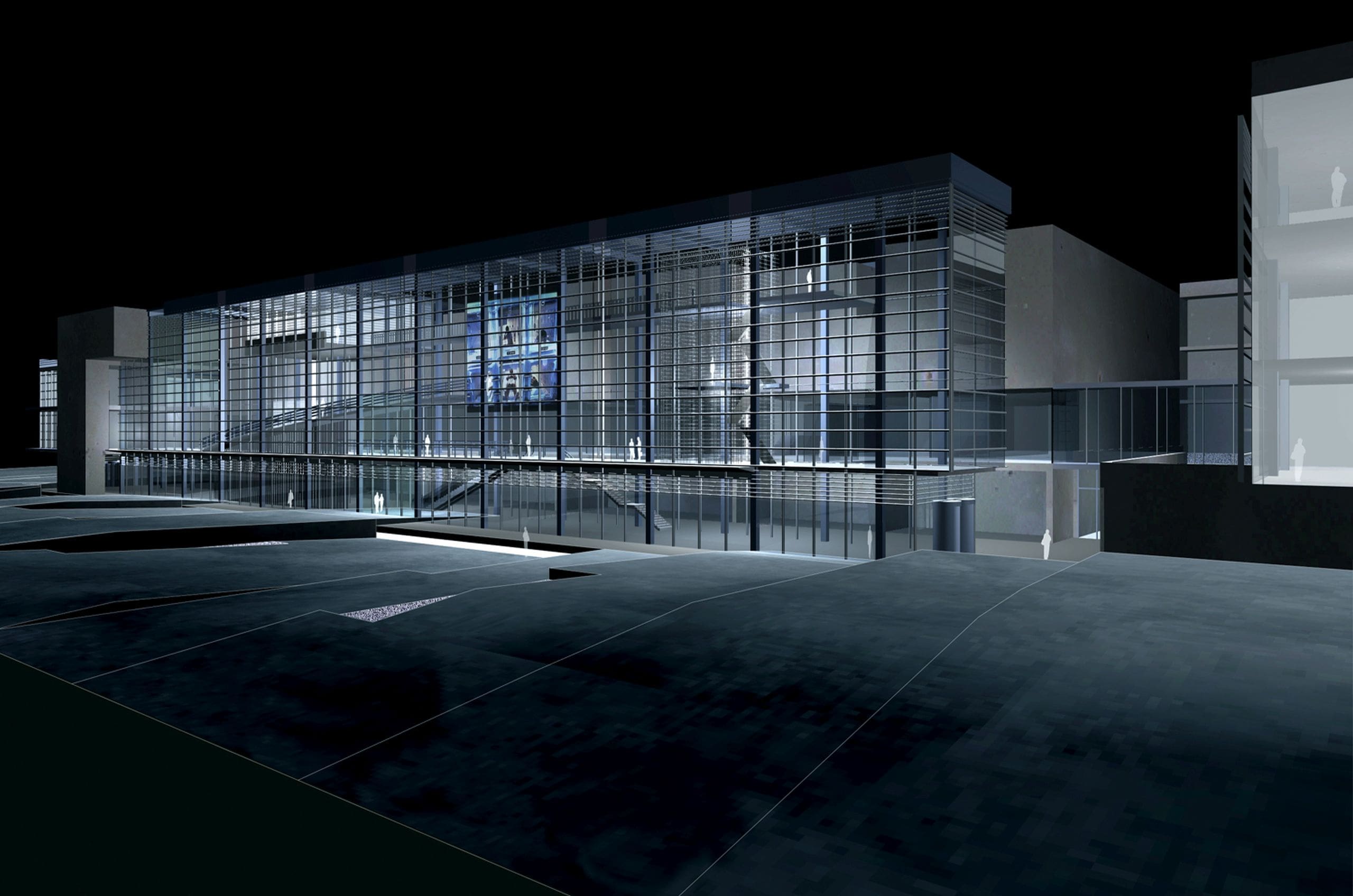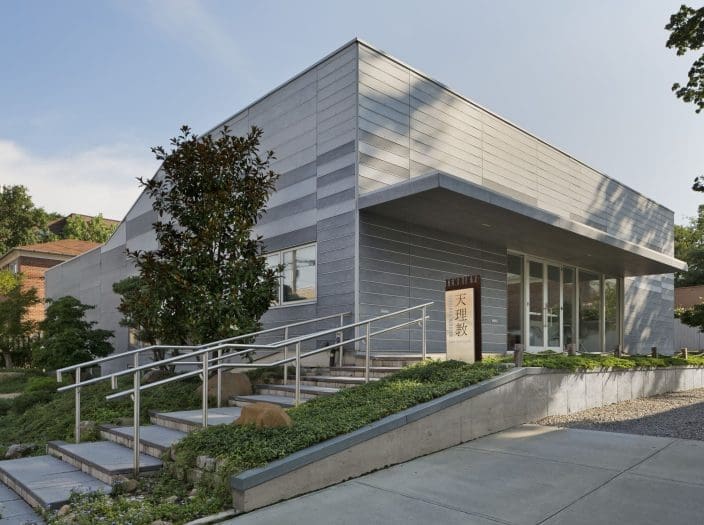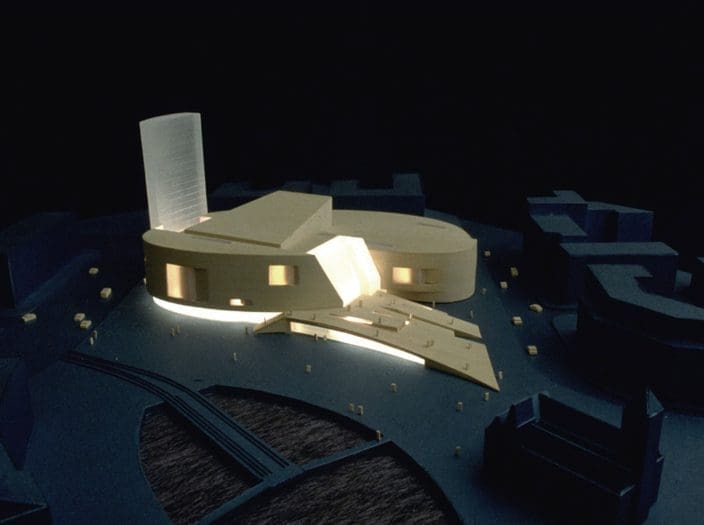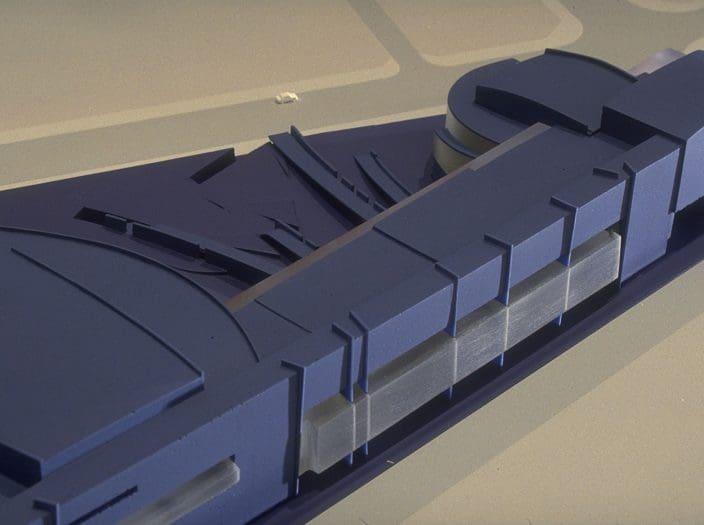Kansai-Kan
National Library of Japan
Our proposal for the National Diet Library in Japan attempts to establish a spatial and programmatic organization that embraces concepts closely related to information technology; specifically the simultaneous dispersion and global accessibility of diverse information in diverse places.
In what could be referred to as an expanded context, the library has evolved from being a container of information to being a node on a diverse and open network. Its status is judged not only by the material collection but by the ability to efficiently connect users with information, both inside and outside its physical boundaries.
In a library such as the Kansai-kan of the National Diet Library, the ownership and the archiving of materials is as equally important as the electronic access to information. The building represents the accessibility of all types of information – both material and electronic through the fluid connections between inside and outside and the (visually) fluid boundaries between accessible and closed areas. The space of information exchange, while encouraging exchanges between readers by becoming a crossroads within the library, acknowledges that some readers may be in remote locations and would therefore become an electronic crossroads as well.
Location
Kansai, Japan
Client
National Library of Japan
Project Type
Competition
Year
1996
MFA Design Team
Scott Marble, Karen Fairbanks, Derek Wong, Tony Perez, Renata Gomes, Jenny Wu
Recognition
Design Award, AIA New York
Project Sponsor
Kansai National Diet Library
